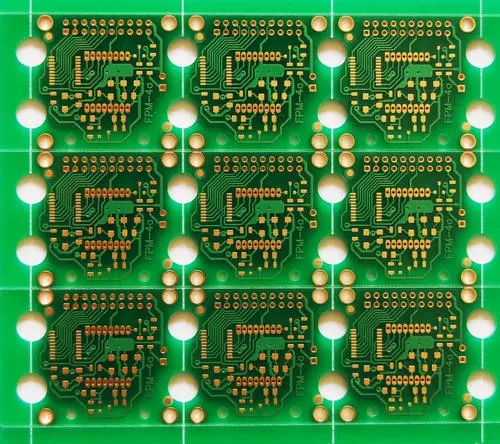Recognize the necessity of PCB internal impedance and internal impedance testing

The internal impedance of the PCB refers to the real impedance of the circuit in the finished PCB, which is different from the concept of the traditional impedance strip (coupon).
Since the printed circuit board is affected by many production equipment and the actual production environment during the production process, there will be a deviation between the impedance line in the board and the impedance line of the coupon.
For high-end PCBs, the requirements for the control of this deviation are getting higher and higher. Therefore, it is necessary for PCB manufacturers to carry out real in-board impedance tests on the finished PCB circuit boards before shipment.
2. Differences and problems between board impedance and Coupon
2.1 The physical difference between the impedance line in the board and the Coupon trace
In-board impedance and coupon
The difference between the impedance line in the coupon and the real board:
(1) Although the trace spacing and trace width are the same, the spacing of the coupon test points is fixed at 2.54mm (to meet the test probe spacing), and the spacing between the ends of the real traces (ie gold fingers) in the board is variable Yes, with the advent of QFP, PLCC, and BGA packages, the pin pitch of some chips is much smaller than 2.54mm (that is, the pitch of Coupon test points).
(2) Coupon routing is an ideal straight line, while the actual routing in the board is often curved and diverse. It is easy for PCB designers and production personnel to idealize the routing of the Coupon, but the actual routing on the PCB board will lead to irregular routing due to various factors.
(3) Coupon and the real wiring in the board have different positions on the entire PCB board. Coupons are located in the middle or edge of the PCB board, and are often removed by the PCB manufacturer when the PCB board leaves the factory. The actual routing positions in the board are diverse, some are near the edge of the board, and some are located in the center of the board.
(4) Vias, pads, shielding layers, etc. are generally distributed around the impedance traces in the board, and the surrounding environment of the Coupon traces is relatively simple.
It can be seen that there is a difference between the impedance line in the board and the Coupon trace, and the difference also brings a difference in the impedance test value.
2.2 The influence of impedance test value
(1) Coupon test point spacing The spacing of the coupon traces is different, which will cause impedance discontinuity between the test points and the traces. The distance between the ends of the actual differential traces (ie, the pins of the chip) in the PCB board is often equal to or very similar to the trace spacing. This will bring about different impedance test results.
(2) The impedance changes reflected by the curved trace and the ideal trace are inconsistent. The characteristic impedance is often discontinuous where the trace is bent and turned, and the idealized trace of the Coupon cannot reflect the discontinuity of impedance caused by the bending of the trace.
(3) The position of the coupon and the actual trace on the PCB board is different. The current PCB boards are designed with multi-layer wiring, which need to be suppressed during production. When the PCB board is pressed, the pressure on the different positions of the board cannot be consistent, and the thickness of the dielectric layer at different positions is different. The dielectric constant of the PCB board made in this way is often different at different positions, and the characteristic impedance is also different. Of course it's different.
(4) The impedance reflected by the internal impedance of the board affected by the surrounding vias, pads, shielding layer, etc. is discontinuous, and the Coupon cannot reflect the true change of impedance due to the single wiring environment.
The above is an introduction to PCB internal impedance and testing technology. Ipcb is also provided to PCB manufacturers and PCB manufacturing technology.